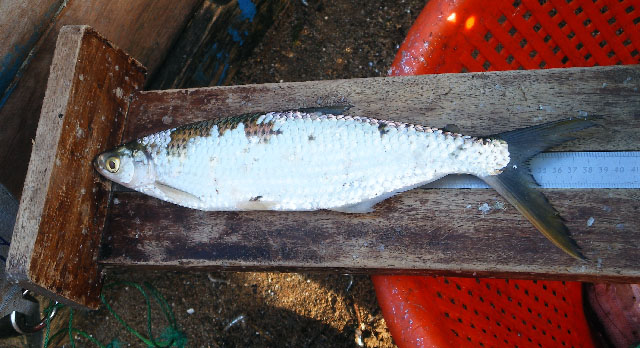| Alestidae (African tetras) |
| 43 cm TL (male/unsexed); 40 cm TL (female); max.weight: 500.0 g; max. reported age: 6 years |
|
benthopelagic; freshwater; pH range: 6.5 - 7.8; dH range: 30, potamodromous |
| Africa: Senegal, Gambia, the coastal basins of the Côte d'Ivoire (Comoé, Bandama and Sassandra), Volta, Niger/Benué and Chad basin (Ref. 2880, 81279). Also present in Nile, Omo, Lake Albert and Lake Turkana (Ref. 2880, 28714). Three populations - previously as subspecies - may be distinguished by slight morphological differences but they have the same ecological charasterics: in Nile River, Lake Albert, Omo River and Lake Turkana ('baremoze'); in Senegal River, Gambia River, Tominé River, Volta basin, Niger basin and Chad basin ('soudaniensis'); in coastal basins of Côte d'Ivoire, namely Sassandra River, Bandama River and Comoé River ('eburneensis') (Ref. 42019). |
|
Dorsal spines (total): 0-0; Dorsal soft rays (total): 10-10; Anal spines: 0-0; Anal soft rays: 22-31; Vertebrae: 41-49. Diagnosis: at least 30 gill rakers on lower limb of first gill arch (30-41); 38-51 lateral line scales, with 7.5-9.5 above and 3.5 below; anal fin with three simple rays and 19-28 branched rays; dorsal-fin origin distinctly behind level of pelvic-fin insertions (Ref. 2759, 81279).
Description: external border of anal fin curves slightly and regularly concave in females; forms an anterior lobe in males with some rays clearly longer; well developed fontanel (Ref. 2759). 41-49 vertebrae (Ref. 2880, 81279).
Colouration: silver/greyish colored with blue-grey back and white belly, greyish fins, entirely covered with scales; Sudanese fishes have orange colors on the inferior lobe of the caudal fin; caudal fork finely edged with black; no precaudal or humeral spots (Ref. 2759, 2880, 81279). |
| Mainly diurnal. There is considerable flexibility in its diet, A. baremoze shifts from zooplankton to zoobenthos, detritus and macrophytes as plankton densities decline (Ref. 28714). Occurs at a temperature range of 14.6-35.0°C. In the Malamfatori area (Tchad), seine-net fishery on the River Yobe depends on seasonal upstream (from Lake Chad) and downstream migration during the flood (August-December) and dry (January-March) seasons, respectively. Also, there is an intensive gillnet fishery from July-October at the river mouth. A. baremoze moves offshore (in Lake Chad) beginning March. |
|
Least Concern (LC); Date assessed: 15 June 2019 Ref. (130435)
|
| harmless |
Source and more info: www.fishbase.org. For personal, classroom, and other internal use only. Not for publication.

